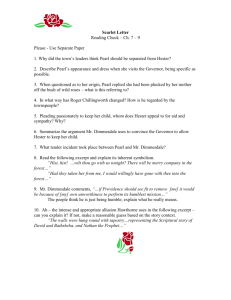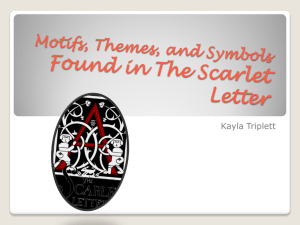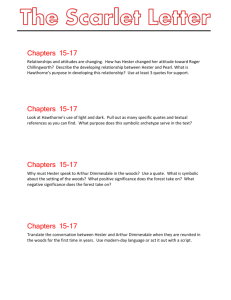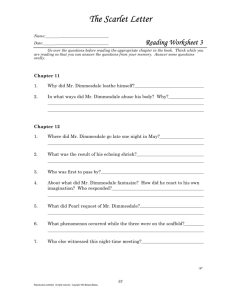The Scarlet Letter
advertisement
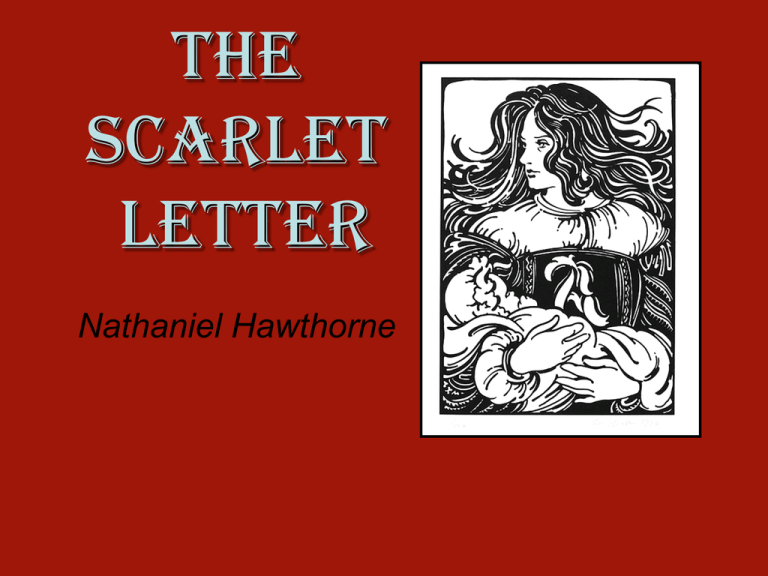
The Scarlet Letter Nathaniel Hawthorne Puritans • Puritans believed nothing could save their souls but the grace of God, and he decides everything ahead of time. • Puritans lived by a strict code of ethics and literally interpreted the Bible. • They did contribute many positive things to America: the first American college, printing press, elections, and public schools. • Hawthorne wrote The Scarlet Letter two hundred years after his ancestors arrived in Salem. He acknowledges his “ancestral guilt” as a descendant of one of the judges in the Salem witchcraft trials. Chapters 1-3 • Characters: Hester Prynne “The Stranger” Pearl Rev. Arthur Dimmesdale Chapters 4-6 • Symbols: “The Black Man” Hester’s self-penance and elevation of Pearl Pearl - the repercussions of secret sin Chapters 7-9 • Bellingham’s home and Mistress Hibbins The importance and imagery of the scarlet A. Dimmesdale with Pearl Chillingworth and Dimmesdale’s soul Chapters 10-12 • Pearl – symbol of truth and disregard for society and its methods. Scaffold: scene 2 … The “electric chain.” The “A” in the sky Chapters 13-15 • Hester’s new role and self-awareness seven years after the act The transformation of Chillingworth and Hester cutting ties of responsibility to him The role of the Scarlet Letter – who should remove it and Pearl’s understanding of it Chapters 16-18 • The source of sin is varied, starting with Hester’s marriage. Sin versus evil. • Hypocrisy in Mistress Hibbins. • The forest reflecting mood, joy realized. Hester’s transformation and Pearl’s reaction. Chapters 19-21 • Hester and Dimmesdale making the same mistakes made when the Puritans left for the New World, in reverse. • Dimmesdale’s wandering thoughts, his soul torn. • What is the purpose of chapter 21? Chapters 22-24 • The visiting sailors and Native Americans and the Scarlet Letter • Dimmesdale: judge, jury, and executioner • Dimmesdale’s proclamation manipulated into allegory • Pearl becomes human, Hester becomes a symbol


